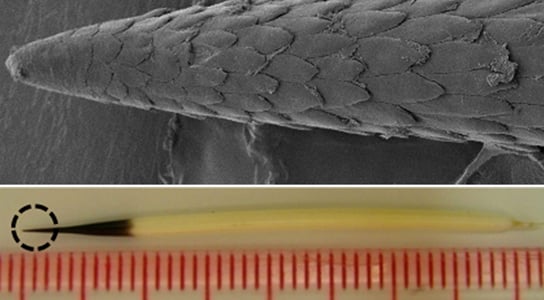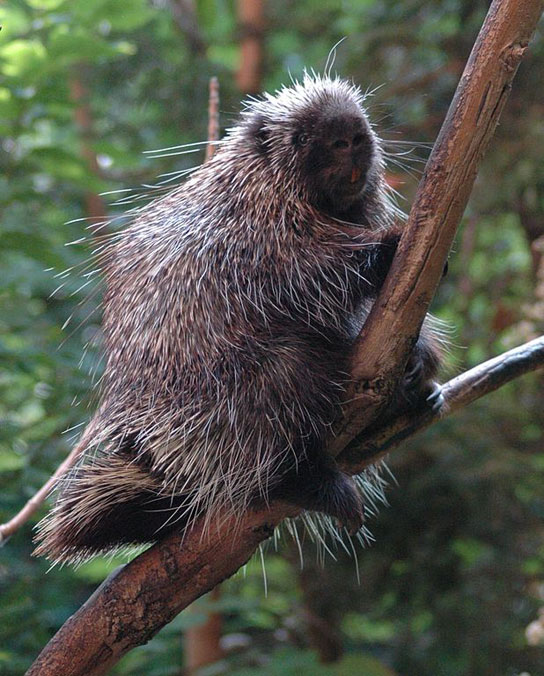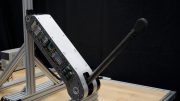
The tiny barbs (top) coating the tips of the quills from North American porcupines (bottom) make it more difficult to extract a quill from flesh, but they also help the quill penetrate the flesh in the first place, a new study suggests. Credit: Woo Kyung Cho
A porcupine quill only needs half the force of a hypodermic needle in order to pierce skin. This new study also explains why the quills are hard to remove and this discovery could improve a variety of medical instruments.
The scientists published their findings in the journal Proceedings of the National Academy of Sciences. Porcupine quills are actually large, stiff hairs that help defend the animals against their predators. The rodents don’t throw their quills, but they do shed them easily, and they can become firmly embedded in their enemies.

North American porcupine at the BioDome, in Montreal, Canada. Credit: J. Glover/Wikimedia
The North American porcupine (Erethizon dorsatum) has about 30,000 quills, each of which is adorned with 700 to 800 barbs. The barbs help the quills to remain embedded in a victim’s skin and until now, scientists hadn’t studied the exact details of what was occurring. Jeffrey Karp, a bioengineer at Harvard Medical School, and his colleagues conducted lab tests that ended in some unexpected results.
Barbed quills were plunged into samples of pig skin, measuring how much force was required. Then, the amount of force necessary to extract the quills was also measured. The same tests were done with barbless quills, in which the barbs were sanded off. African porcupine quills, which do not have any barbs, and an 18-gauge hypodermic needle were used as a comparison.
E. dorsatum‘s quills took half the penetrating force of barbless quills, and only 56% of the force needed for the hypodermic needle to breach the skin. Computer models indicated that the barbs ease the penetrating factor by concentrating force along the edges of the barbs, similar how the serrations on a serrated blade make cutting meat easier.
Barbed quills are four times harder to pull out once they are embedded. Barbs located within 1 mm of the tip of the quill contributed to about half of the pull-out resistance, possibly because the flesh more tightly surrounded the tip than the rest of the quill.
These findings could be used to enhance various biomedical devices, like replacing chemical adhesives in wound dressings with tiny barbed needles. The staples that are used to hold some surgical incisions shut rely largely on friction along their length to remain in the flesh. These could also be replaced by barbed staples that are shorter and have a smaller diameter. Extracting smaller, barbed staples would likely cause less overall damage than pulling out the staples currently in use.
Reference: “Microstructured barbs on the North American porcupine quill enable easy tissue penetration and difficult removal” by Woo Kyung Cho, James A. Ankrum, Dagang Guo, Shawn A. Chester, Seung Yun Yang, Anurag Kashyap, Georgina A. Campbell, Robert J. Wood, Ram K. Rijal, Rohit Karnik, Robert Langer and Jeffrey M. Karp, 10 December 2012, Proceedings of the National Academy of Sciences.
DOI: 10.1073/pnas.1216441109









Be the first to comment on "Barbed Porcupine Quills Could Help Enhance Various Biomedical Devices"